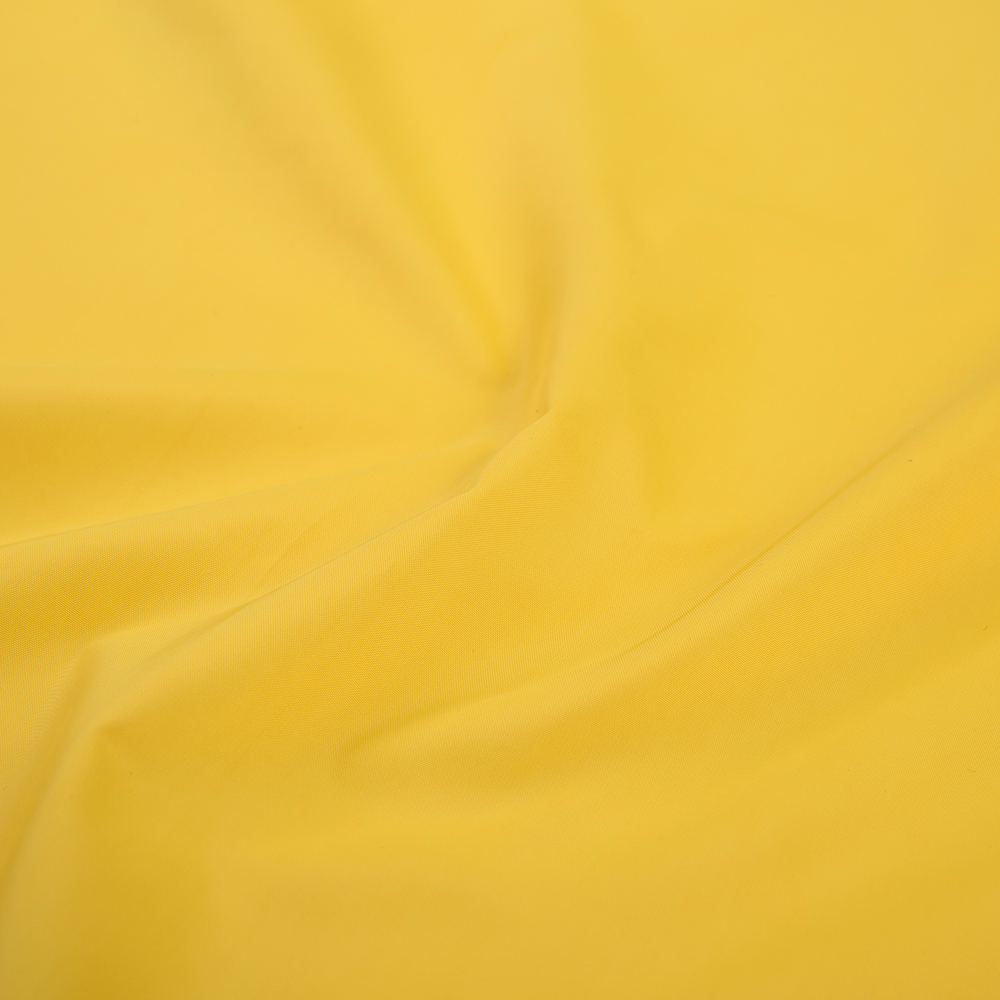Sewing and handling polyester taffeta fabric can present several challenges due to its unique properties, including its smooth, slippery texture, stiffness, and tendency to fray. Here are some of the typical challenges and solutions for managing polyester taffeta:
1. Slippery Texture
-
Challenge: Polyester taffeta has a smooth, slick surface, which can cause the fabric to shift or slide around while sewing, making it difficult to keep pieces aligned.
-
Solution:
-
Use of fabric clips instead of pins to hold pieces together, as pins may leave permanent holes.
-
Basting or using a temporary adhesive spray to secure layers before sewing.
-
Sewing machine with a non-slip presser foot to help grip the fabric and prevent shifting.
-
2. Fraying and Edge Finishing
-
Challenge: Taffeta tends to fray easily due to its tight weave, which can result in raw edges unraveling over time.
-
Solution:
-
Overlock/serge the edges to prevent fraying and improve durability.
-
Use French seams or bias tape to finish the edges neatly and reduce fraying.
-
Seam sealants can be applied to prevent edge fraying in more delicate or high-stress areas.
-
3. Creasing and Wrinkling
-
Challenge: Polyester taffeta can wrinkle easily, and because it has a stiff, structured nature, creases may become difficult to remove.
-
Solution:
-
Use low heat when pressing, and always press from the inside of the fabric to avoid shine marks on the exterior.
-
Steam pressing works better for removing wrinkles without damaging the fabric’s sheen.
-
Iron with a pressing cloth to avoid direct contact with the fabric, which can cause burns or undesirable shine.
-
4. Difficulty with Stitching
-
Challenge: Due to the stiffness of polyester taffeta, the fabric can sometimes be difficult to stitch neatly, with the fabric resisting smooth sewing and causing skipped stitches or puckering.
-
Solution:
-
Use a sharp needle (like a universal 70/10 or 80/12 needle) specifically designed for lightweight, delicate fabrics.
-
Adjust the tension on the sewing machine to prevent puckering or stretching.
-
Use a finer thread (like polyester or silk thread) to reduce bulk and improve stitch definition.
-
5. Fabric Shifting During Sewing
-
Challenge: The smooth surface of polyester taffeta can cause layers to shift, making it challenging to keep multiple layers aligned while sewing.
-
Solution:
-
Use tear-away stabilizers or wash-away stabilizers to help keep the fabric in place and prevent movement.
-
Pin or clip carefully (use fabric clips, as pins may distort the fabric), ensuring that the fabric doesn’t shift during stitching.
-
6. Shine Marks
-
Challenge: The shiny, reflective surface of polyester taffeta can easily develop shine marks or uneven sheen from heat, sewing machine pressure, or handling.
-
Solution:
-
Always use medium heat when pressing the fabric and avoid direct contact with the iron by using a pressing cloth.
-
If shine marks occur, steam the fabric lightly while pressing to restore the original sheen.
-

7. Static Cling
-
Challenge: Polyester taffeta can generate static electricity, causing the fabric to cling to itself or other fabrics, which can be problematic during sewing and handling.
-
Solution:
-
Use an anti-static spray or rub a dryer sheet over the fabric to reduce static cling before sewing.
-
Use a humidifier in the sewing room to help reduce static buildup.
-
8. Difficulty in Hemming
-
Challenge: Hemming polyester taffeta can be tricky because the fabric’s stiffness and tendency to fray make it hard to achieve a clean, neat finish.
-
Solution:
-
Use a narrow rolled hem or blind hem to finish the edges without bulk.
-
Consider using fusible hem tape or fusible webbing to secure the hem in place before stitching to avoid puckering.
-
9. Poor Drapability
-
Challenge: Because of its stiffness, polyester taffeta doesn't drape as naturally as softer fabrics, making it difficult to achieve a smooth, flowing look in garments.
-
Solution:
-
For garments that require more drape, consider layering polyester taffeta with a softer fabric or lining.
-
Pre-softening the fabric by washing it in a delicate cycle or applying fabric softener may make it more pliable for certain applications.
-
10. Heat Sensitivity
-
Challenge: Polyester taffeta can be sensitive to excessive heat, and direct exposure to high temperatures can cause melting or permanent damage.
-
Solution:
-
Always press at a low temperature with a pressing cloth to avoid direct contact with the fabric surface.
-
Avoid ironing the fabric when it is too hot to prevent damage.
-











